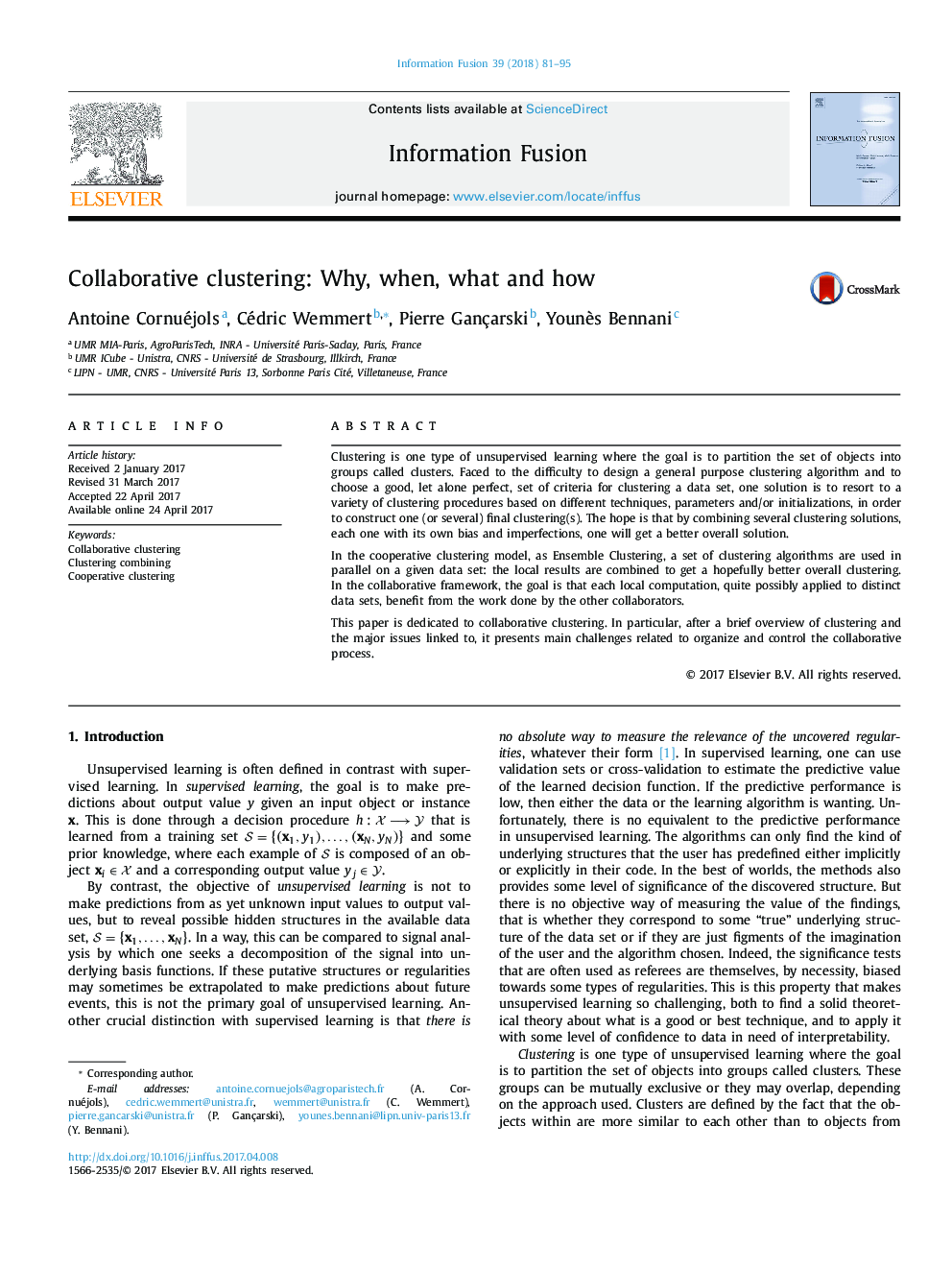| کد مقاله | کد نشریه | سال انتشار | مقاله انگلیسی | نسخه تمام متن |
|---|---|---|---|---|
| 4969163 | 1449896 | 2018 | 15 صفحه PDF | دانلود رایگان |
- A didactic presentation of issues raised by clustering is given.
- An up-to-date review and classification of collaborative clustering methods is presented.
- The questions about why, when and how collaborative clustering can help are addressed.
Clustering is one type of unsupervised learning where the goal is to partition the set of objects into groups called clusters. Faced to the difficulty to design a general purpose clustering algorithm and to choose a good, let alone perfect, set of criteria for clustering a data set, one solution is to resort to a variety of clustering procedures based on different techniques, parameters and/or initializations, in order to construct one (or several) final clustering(s). The hope is that by combining several clustering solutions, each one with its own bias and imperfections, one will get a better overall solution.In the cooperative clustering model, as Ensemble Clustering, a set of clustering algorithms are used in parallel on a given data set: the local results are combined to get a hopefully better overall clustering. In the collaborative framework, the goal is that each local computation, quite possibly applied to distinct data sets, benefit from the work done by the other collaborators.This paper is dedicated to collaborative clustering. In particular, after a brief overview of clustering and the major issues linked to, it presents main challenges related to organize and control the collaborative process.
Journal: Information Fusion - Volume 39, January 2018, Pages 81-95
